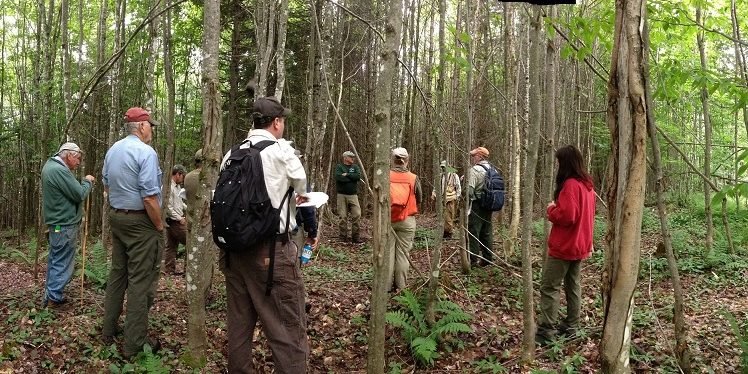Dartmouth Second College Grant

Dartmouth Second College Grant
Dartmouth College has owned the property since June 1807 and has been engaged in timber management since 1828. In 1905, the College began contracting for professional forestry advice and by 1947, the College developed a forest management plan and hired a staff forester to manage the property. This long tenure of management offers an amazing reserve of information in old cut histories, aerial photos, and other data that is part of what makes this property so valuable as a demonstration site.
The Second College Grant has had three main eras of timber management. The softwood era from 1808 to 1940, then multiple use forestry from 1940 to 1970. These were followed by the current refinement of the multiple use approach that utilizes an ecosystem-based method of forest management. This approach strives to be adaptive, inclusive, and considerate of the entire forest ecosystem while sustaining the forests three primary purposes: 1) Education and Research; 2) Recreational Pursuits; and 3) Financial.
The property is predominantly forested and supports a wide range of research projects, demonstration efforts, and partnerships. Projects encompass silviculture, wildlife (game, non-game, and endangered), fisheries, birds, water quality, botany, climate change and others. Management actively promotes softwood species in harvest areas, mows areas for upland game birds, and plants wildflowers for butterflies. Some sensitive areas of the property are designated as no-touch reserves. Canada lynx, pine marten, moose, wood turtle, alder-sided flycatcher, and brook trout are a few of the wildlife species that receive special attention. Regular inventories for management are conducted on the property, and 150 permanent CFI plots are maintained for long-term monitoring and the validation of the annual allowable cut.
Natural disturbance in this area manifests mainly in small-scale events, such as wind throw, ice-storms, etc., resulting in a fine-scale matrix of ages and species. While the history of management on this property often did not reflect this ecological history, current management respects it. Silviculture is mainly single-tree and group selection, with some larger patches. In a few cases where previous management left little in the way of a workable residual stocking, small (<5-acre) clearcuts have been employed, providing a level of spatial diversity in an otherwise forested landscape. Harvesting equipment is also small in scale: only hand-felling and cable skidders are currently used for harvesting—with some of the crews having a long tenure on the property. Efforts to enhance species diversity are balanced with the need to ensure adequate acceptable regeneration.
The overall management plan is strategic in nature, offering overall goals and objectives, including five-year harvest plan, but operational details are in the hands of the land manager. Each potential harvest receives a pre-harvest review (often including additional inventory), careful layout, individual tree marking, post-harvest mapping and closeout.
Forest Statistics
- Acreage: 27,000
- Forest Types: northern hardwoods, softwood, mixed wood
- Managers: Riley Patry and Kevin Evans, Dartmouth College Woodland Operations
- Primary Uses: education and research, recreation, financial
- Certifications:
- American Tree Farm System,
- National Forestry Association’s Green Tag System
Documentation
Stay Informed
about our recent projects and upcoming events.
